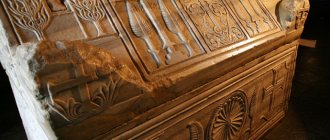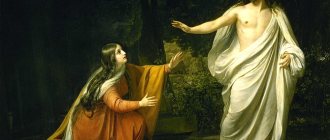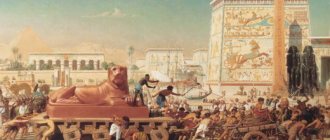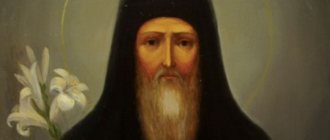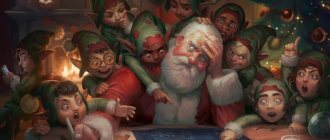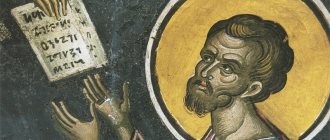Biblical tales have occupied the minds of scientists for centuries. Sacred texts are being studied, and during excavations in the Middle East, new artifacts are found that often ask more questions than they find answers. Stone tablets and the commandments inscribed on them are one of these mysteries.
What are the Tablets of the Covenant
This image came to us from the Bible and is firmly entrenched in culture and art. Here it is worth highlighting the semantic, historical, religious and linguistic aspects.
Origin of the word
This word, like many other religious terms, takes its roots from the Old Church Slavonic language and denotes cut boards - not necessarily stone. In Hebrew, this name sounds like “luchot ha-brit,” that is, “boards of the covenant.” In the language of the Bible, the last word can also mean "alliance" or "treaty." That is, the semantic emphasis is placed on the agreement that, according to Scripture, God concluded with the Jewish people.
Meaning of the concept
The term is most often used in a biblical context to describe the stone slabs inscribed with the commandments that God gave to the prophet Moses. But in a broader sense, the meaning of the word is a slab or board with text, that is, we are talking about writing material as such. And in ancient times they could also be wood and especially clay, if we are talking about the Middle Eastern region with its famous cuneiform writing.
Commandments of the Old and New Testaments
It would be incorrect to point out that the commandments of the New Testament contradict and cancel the Ten Commandments. On the contrary, the New Testament Beatitudes complement the Old Testament teaching. This is confirmed by the words of the Savior from the Gospel of Matthew: “Do not think that I came to destroy the law or the prophets: I did not come to destroy, but to fulfill.”
In secular language, the laws of the New Testament require a person to pay more attention to his inner world, thoughts and desires.
Stone tablets of the Ten Commandments
The Decalogue was intended for people with a hardened heart and consciousness that never knew the true God. For those people, observing the rules of abstaining from anything was sufficient. In the Beatitudes, everything is quite serious: now the mere thought of the death of a neighbor is equal to mortal sin.
Interesting! “Tablets” is a word of Slavic origin. It has several meanings, such as “stone”, “board”. In Hebrew, the Tablets of the Covenant are called Luchot HaBrit, which literally means “boards of the covenant.”
Biblical story
The shrine was first mentioned in the book of Exodus, the second part of the Pentateuch of Moses, or Torah, according to the tradition of Judaism.
History of appearance
The Torah, or Pentateuch of Moses, tells that the commandments were transmitted to the prophet from above on Mount Sinai. Thus, a covenant, or agreement, was concluded between the one God and the Jews.
However, the surrounding peoples continued to remain pagans, worship idols and maintain polytheism. A similar culture and related Semitic dialects simplified the penetration of foreign cults into the Jewish environment - this phenomenon is well described in the Old Testament. Just like the fact that Moses in anger broke not only the golden calf, but also the stone slabs with the commandments.
However, God gave them again - and now they were carefully preserved in the Ark of the Covenant. This special sarcophagus was portable and accompanied the nomadic Jews during their travels and military campaigns, and was then kept in the Holy of Holies of the First Temple, built by King Solomon in Jerusalem.
The essence and content of the inscriptions
According to Scripture, the 10 Commandments were carved on the stone - a summary of the divine law and rules of life that the chosen people must follow. However, there are 613 commandments in total - they are listed in the Torah.
Purpose and meaning of the relic
Tablets with commandments, carved with a divine sign in stone, became evidence of the union concluded by God with people. These regulations acquired the force of law for the Jews, who from that moment became God's chosen people. The Ark of the Covenant served as a shrine and was carefully guarded.
After the conquest of Canaan and the transition to settled life, the relic found a place in Solomon's temple. It became evidence of faith in one God in the context of the continued expansion of pagan cults and actual dual faith, when the position of Judaism in the Promised Land was not yet strong enough.
Scriptures that talk about the Tablets of the Covenant [↑]
The Torah tells us the following about the Tablets of the Covenant:
“And the Lord said to Moses, Come up to Me on the mountain and be there, and I will give you the tablets of stone and the Torah and the commandment that I wrote to teach you with them” ( Shemot 24:12
).
“And Moses entered into the midst of the cloud, and went up into the mountain, and Moses was on the mountain forty days and forty nights” ( ibid., 18
).
“And He gave Moses, at the end of his conversation with him on Mount Sinai, two tablets of revelation, tablets of stone, written with the finger of G‑d” ( ibid., 31:18
).
“And Moses turned and came down from the mountain, and the two tablets of the testimony were in his hand, tablets with an inscription on both sides: on one side and on the other there was writing on them. And these tablets were the work of G‑d, and the writings were the writings of G‑d, carved in the tablets” ( ibid., 32:15, 16
).
“And it came to pass, when he approached the camp and saw the calf and the dancing, that Moshe’s anger was kindled, and he threw the tablets out of his hands and broke them under the mountain” ( ibid., 19
).
“And it came to pass on the next day that Moses said to the people: You have committed a great sin, and now I will ascend to the Lord, perhaps I will atone for your sin” ( ibid., 30
).
“And the Lord said to Moses, Hew out for yourself two tablets of stone like the first, and I will write on them the same words that were on the first tablets that you broke” ( ibid., 34:1
).
“And he hewed two tablets of stone like the first, and Moses rose up early in the morning and went up to Mount Sinai, as the Lord commanded him, and took the two tablets of stone in his hands” ( ibid., 4
).
“And he stayed there with the Lord forty days and forty nights, did not eat bread or drink water, and wrote on the tablets the words of the covenant, ten sayings. And it came to pass when Moses came down from Mount Sinai, and both tablets of the testimony were in Moses’ hand as he came down from the mountain, and Moses did not know that his face was shining radiantly from His conversation with him” ( ibid., 28, 29
).
“And He declared to you His covenant, which He commanded you to perform, ten sayings, and He wrote it on two tablets of stone” ( Deuteronomy 4:13
).
“The Lord spoke these words to all your congregation on the mountain, out of the midst of fire, cloud and darkness, with a loud voice, to which he added no more, and he wrote them on two tablets of stone, and gave them to me” ( ibid., 5:19
).
“When I went up to the mountain to receive the tablets of stone, the tablets of the covenant that the Lord has made with you, and I stayed on the mountain forty days and forty nights, I did not eat bread or drink water. And the Lord gave me those two tablets of stone, written with the finger of God, and on them were all the words that the Lord spoke to you on the mountain out of the midst of the fire on the day of the assembly. And it came to pass at the end of forty days and forty nights that the Lord gave me those two tablets of stone, the tablets of the covenant" ( ibid., 9:9-11
).
“And I turned and came down from the mountain, and the mountain was burning with fire, the two tablets of the covenant on both my hands. And I saw that you had sinned against the LORD your God, you made a molten calf... And I grabbed both tables, and threw them from both my hands, and broke them before your eyes" (ibid., 9:15 -17
).
“At that time the Lord said to me: hew yourself two tablets of stone, like the first, and go up to me on the mountain, make yourself an ark of wood. And I will write on the tablets the same words that were on the first tablets that you broke, and put them in the ark. And I made an ark of cedar wood, and hewed out two tablets of stone like the first, and I went up into the mountain, and the two tablets were in my hand. And He wrote on the tablets, as the first text, the ten sayings that the Lord spoke to you from the midst of the fire on the day of assembly, and the Lord delivered them to me. And I turned and came down from the mountain, and put the tablets in the ark that I had made, and they were there, as the Lord commanded" (ibid. , 10:1-5
).
Interpretation
The Ten Commandments are also known as the Decalogue. Depending on the biblical translation, the wording may differ in detail, but the essence is the same:
I am your God and you shall have no other gods before Me.
The veneration of one God is prescribed. There is also a direct ban on worshiping the Creator and other deities at the same time - which was very important in those conditions.
Do not make yourself an idol, do not serve it or worship it.
Here there is a logical continuation of the first commandment - and the inadmissibility of alien cults in material terms. Idolatry is strictly prohibited. Nowadays, this has been embodied in a proverb that condemns over-indulgence in something and becoming an object of worship.
Don't take God's name in vain.
The interpretation of this prohibition varies. Judaism takes it literally - the name of God is taboo, and various epithets are used instead. In Hebrew, the term "Hashem" (literally "Name") is also used very often. Another understanding of the commandment is that a person should not disturb the Creator unnecessarily and strive to transfer responsibility for his actions to him.
Honor the Sabbath day.
In the Jewish calendar, Saturday, or Shabbat, is the seventh day of the week. It is believed that God created the world in six days, and on the seventh he only contemplated his creation. Likewise, the believer is instructed to rest on this day and devote it to prayer.
Honor your father and mother.
Respect and care for parents, traditional for all cultures, will be rewarded with longevity - so says this law.
Dont kill.
The biblical parable of Cain and Abel tells how death first entered the world of people - and it was fratricide committed out of ignorance. Here the value of the life of one's neighbor is affirmed.
Don't commit adultery.
Adultery is condemned. Husband and wife must remain faithful to each other, and violation of this in the Old Testament was severely punished, including the death penalty. However, limited polygamy was allowed - according to biblical texts, many Jewish patriarchs had concubines.
Don't steal.
After leaving Egyptian slavery, the Jews wandered through the desert in conditions of scarcity and limited resources. Theft under these conditions was rightly recognized as a grave sin.
Don't bear false witness.
The Old Testament emphasizes the importance of keeping oaths and being faithful to one's word. Before the appearance of the first kings of Israel, judges played the role of rulers for a long time. Therefore, in these conditions, the honesty of the witness was extremely important as an element of justice and social relations in general.
Do not covet your neighbor's wife or any of his property.
The commandment is sometimes interpreted as a general understanding of the prohibition of theft and adultery. But usually it is understood more simply - do not envy your neighbor and what he has.
Chapter 32
1–14. The golden calf and the wrath of the Lord. 15–20. Moses breaks the tablets; destruction of the golden calf. 21–28. Punishment of idolaters. 29–35. Moses' return to the mountain and his prayer.
Exodus 32:1. When the people saw that Moses did not come down from the mountain for a long time, they gathered to Aaron and said to him: Arise and make us a god who would go before us, for we do not know with this man, with Moses, who brought us out of the land of Egypt. what happened.
As can be seen from Deut. 9.9 etc., the demand of the people “make us gods who would go before us” took place shortly before the end of Moses’ 40-day stay at Sinai and was caused by his prolonged absence, suggesting that he would never return from the mountain. Since Moses was the representative of God for the Jews (Ex. 20.1–2), his non-return to the people served as a guarantee for the latter that he had been abandoned by the Almighty (Deut. 31.1–6). A direct indication of the existence of such a view is in the words “make gods who would go before us.” The people do not believe that the pillar of cloud, which served as a visible sign of the presence and revelation of Jehovah to Israel, will go ahead of them, as before, and asks to replace Him with the image of another god. The Jewish expression “elohim” in this case with a plural predicate, which combination is used to designate pagan gods, makes it clear that the Jews are asking to make an image not of the Most High, but of a pagan god. The validity of this understanding is confirmed by the words of Ps.105: “and they exchanged their glory for the image of an ox eating grass. They forgot God their Savior, who had done great things in Egypt” (Ps. 105:20-21).
Exodus 32:2. And Aaron said to them: Take out the gold earrings that are in the ears of your wives, your sons and your daughters, and bring them to me.
Exodus 32:3. And all the people took the gold earrings out of their ears and brought them to Aaron.
By his own admission, Aaron, to whom, as the deputy of Moses (Ex. 24.14), the Jews turned to with a request, yielded to their demand in view of the fact that these people are “evil” (Ex. 32:22), i.e. fear for his own life (Ex. 17.4) forced him to fulfill the popular demand. As for the proposal to bring “gold earrings that are in the wives’ ears,” then, according to Ephraim the Syrian and Blessed Theodoret, it was made with the hope that the wives, sparing their jewelry, would turn their husbands away from the fusion of the calf.
Exodus 32:4. He took them from their hands, and made a molten calf out of them, and dressed it with a chisel. And they said, Behold your God, O Israel, who brought you out of the land of Egypt!
Having chosen the form of a calf to depict God, Aaron, as most ancients (Philo, Lactantius, Blessed Jerome) and new researchers think, imitated the Egyptians. This conclusion is supported, first of all, by the undoubted fact that the Egyptians venerated the black bull Apis in Memphis and the white bull, or Mnevis, in Heliopolis, and the evidence of Greek writers, Strabo, Plutarch, Herodotus, gives reason to assume that the Egyptians also used images of these sacred animals (although In general, zoomorphism had much less place among the Egyptians than zoolatry itself). The Egyptian origin of the golden calf is further indicated by the very nature of the celebration performed in honor of it. In addition to the sacrifice, it consisted of feasting, games (Exodus 32:6), dancing (Exodus 32:19) and noisy songs (Exodus 32:18). The Egyptian festivals in honor of Isis had approximately the same forms. Describing them, Herodotus says: “some of the women strike cymbals, others play flutes, other women and men sing and applaud.” Finally, the words of the first martyr Stephen speak for the Egyptian origin of the golden calf: “our fathers turned their hearts to Egypt, saying: make us gods” (Acts 7.39–40).
Since the calf or ox served in ancient times as an image of strength and energy, the Jews recognized the force embodied in the golden calf as the force that brought them out of Egypt: “These are your gods, O Israel, who brought you out of the land of Egypt.” But this power was not in their eyes the power (at least in the eyes of the overwhelming majority) of the Almighty, and the golden calf itself did not serve as His image. In addition to the above, the justice of this is confirmed by the words of the Lord to Moses (Exodus 32:8): serving the golden calf is not serving Him, the Existing One (as it could be in the eyes of Aaron, Exodus 32:5, and other less religiously developed members of the people ), represented in the form of a calf, and the worship of this latter. The Apostle Paul expresses exactly the same view, calling those who served the golden calf idolaters (1 Cor. 10.7).
Exodus 32:5. Having seen this,
Aaron set up an altar before him, and Aaron proclaimed, saying, “Tomorrow is a feast of the Lord.”
Exodus 32:6. The next day they rose early and offered burnt offerings and brought peace offerings: and the people sat down to eat and drink, and afterward they stood up to play.
With the words: “tomorrow is a holiday to the Lord,” Aaron tries to correct the people’s view of the golden calf; he is the image of the invisible Lord. But the pagan nature of the celebration performed in honor of the new god proves that the people for the most part remained in their convictions.
Exodus 32:7. And the Lord said to Moses: Hasten to come down [from here], for your people, which you brought out of the land of Egypt, have become corrupt;
Exodus 32:8. They soon turned away from the path that I commanded them: they made themselves a molten calf and worshiped it, and brought sacrifices to it and said: “Behold your God, O Israel, who brought you out of the land of Egypt!”
Serving the golden calf, as a violation of the first commandment, idolatry, in the spiritual sense, debauchery (Deut. 4.16), was on the part of the people a betrayal of the promise given to them to fulfill everything that God says (Ex. 19:8, 24:7). With such a relationship to Jehovah, the Jews cease to be God’s chosen people: “Your people have become corrupt” (Deut. 32:5). And if the granting of laws is conditioned by Israel’s filial relationship to God, fidelity to His decrees, then with the betrayal of Jehovah, with the loss of the people’s chosenness of God, the legislation itself ceases: “hasten to leave [from here].”
Exodus 32:9. And the Lord said to Moses: I see this people, and behold, they are a stiff-necked people;
Exodus 32:10. Therefore leave Me, that My wrath may burn against them, and I may destroy them, and make of you a great nation.
A particular case of disobedience serves as a manifestation of the people's character - that cruelty (Ex. 33:3, 5, Deut. 9:6, 13), which is reflected in resistance to divine guidance, unwillingness to bend one's neck under the yoke of the law. With such an attitude of the Jews towards God, there is no longer room for His mercy; it excludes even the possibility of intercession: “leave Me” (Jer. 7:16, 11:14). Mercy is replaced by anger, which is reflected in punishment (Nahum. 1:2, etc.). But the punishment of Abraham’s unworthy descendants does not exclude the possibility of fulfilling the promises given to him: God’s chosen people will be descended from Abraham’s descendant, Moses.
Exodus 32:11. But Moses began to beg the Lord his God, and said: Let not Your anger, O Lord, be kindled against Your people, whom You brought out of the land of Egypt with great power and with a mighty hand,
Exodus 32:12. so that the Egyptians would not say: He brought them out to destruction, to kill them in the mountains and destroy them from the face of the earth; turn away Your fiery anger and cancel the destruction of Your people;
Exodus 32:13. Remember Abraham, Isaac and Israel [Jacob], Your servants, to whom You swore by Yourself, saying: I will multiply your seed like the stars of heaven, and I will give all this land of which I have spoken to your seed, and they will possess [it] forever. .
Begging for the abolition of the terrible judgment against the criminal people, Moses does not try to diminish their guilt. He only points to God's previous good deeds to the Jews (Ex. 32:11), as a basis for showing mercy again. Another reason for this is zeal on the part of the Almighty for the glory of His holy name: if He destroys Israel, then other nations and, first of all, the Egyptians will say with gloating: “because the Lord does not have the power to bring this people into the land that He swore promised Him, He destroyed him in the wilderness” (Deut. 11:28). The Lord cannot destroy Israel because of the promises given to its ancestors. Promises to multiply, preserve and bring into the Promised Land were given to the seed of Abraham in general (Gen. 48:19), and therefore transferring them to the tribe of Levi, in particular to the generation of Moses alone, would be a direct violation of the oath confirmed covenant.
Exodus 32:14. And the Lord abolished the evil which He had said He would bring upon His people.
The terrible definition is canceled only for the time being (Exod. 32:34, Num. 14:22, etc.).
Exodus 32:15. And Moses turned and came down from the mountain; were in his hand
two tablets of revelation [stone], on which it was written on both sides: on both sides it was written;
Exodus 32:16. the tablets were the work of God, and the writings inscribed on the tablets were the writings of God.
Exodus 32:17. And Jesus heard the voice of the people making a noise and said to Moses, “There is a cry of war in the camp.”
Exodus 32:18. But [Moses] said: This is not the cry of those who overcome, nor the cry of those who are defeated; I hear the voice of those singing.
Exodus 32:19. When he approached the camp and saw the calf and the dancing, then he was inflamed with anger and threw the tablets from his hands and smashed them under the mountain;
The tablets with the commandments written on them were, as it were, a document of the covenant between God and the people. The people testified to their readiness to fulfill the will of God (Exodus 19:8, 24:3), and the Lord promised on His part to give the tablets (Exodus 24:12) and actually gave them (Exodus 31:18). But as soon as Israel did not fulfill its obligation, violated the covenant, all meaning in the existence of its document - the tablets - was lost: it was broken. “Since,” says Blessed Theodoret, “the tablets represented an image of a marriage obligation, and the bride, not yet entering the bridal chamber, strayed into fornication, then Moses very rightly tore apart this marriage obligation.”
Exodus 32:20. and he took the calf which they had made, and burned it with fire, and ground it to dust, and scattered it upon the water, and gave it to the children of Israel to drink.
Exodus 32:21. And Moses said to Aaron, “What has this people done to you, that you have made them fall into great sin?”
Exodus 32:22. But Aaron said [to Moses], Let not the anger of my lord be kindled; you know these people are violent.
Exodus 32:23. They said to me: make us a god who will go before us; for we do not know what happened to Moses, to this man who brought us out of the land of Egypt.
Exodus 32:24. And I said to them: whoever has gold, take it off you. [They took it off] and gave it to me; I threw it into the fire, and this little calf came out.
Exodus 32:25. Moses saw that these were an unbridled people, for Aaron had allowed them to become unbridled, to shame before their enemies.
Exodus 32:26. And Moses stood at the gate of the camp and said: He who belongs to the Lord, [come] to me! And all the sons of Levi gathered to him.
Exodus 32:27. And he said to them, Thus says the Lord God of Israel: Put every man his sword on his thigh, go through the camp from gate to gate and back, and kill every man his brother, every man his friend, every man his neighbor.
Exodus 32:28. And the children of Levi did according to the word of Moses: and about three thousand of the people fell that day.
Exodus 32:29. For Moses said [to them], “Today consecrate your hands to the Lord, every one of you in his son and in his brother, that He may bestow upon you a blessing today.”
The trial of idolaters, beginning with the destruction of the golden calf, continuing with the reprimand of Aaron and ending with the beating of the guilty.
Exodus 32:20. and he took the calf which they had made, and burned it with fire, and ground it to dust, and scattered it upon the water, and gave it to the children of Israel to drink.
The covenant with the Almighty is broken - the tablets are broken. But Israel cannot remain with its new god - the golden calf: its existence is a direct reason for the continuation of idolatry. That is why he is being destroyed. The calf was burned - a wooden block in the shape of a calf was burned, and the unburnt parts - the gold - were broken, ground, thrown into a stream flowing from the mountain (Deut. 9:21), and the Jews were given its water to drink. Destroying the calf does not mean absolving the people of guilt. On the contrary, he drinks water into which the powder remaining after the burning of the calf has been poured, i.e. perceives, takes upon himself sin with its consequences.
Exodus 32:21. And Moses said to Aaron, “What has this people done to you, that you have made them fall into great sin?”
Exodus 32:22. But Aaron said [to Moses], Let not the anger of my lord be kindled; you know these people are violent.
Exodus 32:23. They said to me: make us a god who will go before us; for we do not know what happened to Moses, to this man who brought us out of the land of Egypt.
Exodus 32:24. And I said to them: whoever has gold, take it off you. [They took it off] and gave it to me; I threw it into the fire, and this little calf came out.
Among the persons on whom responsibility for breaking the covenant falls is Aaron, as the culprit for introducing the Jews into the sin of idolatry by merging the golden calf. Aaron himself does not deny his guilt, but only tries to belittle it: he tries in the lightest terms to imagine his participation in the creation of the calf. According to him, it turns out that he only invited those wearing gold jewelry to take them off, that they themselves gave the gold, which he threw into the fire, and the calf was formed by itself.
Exodus 32:25. Moses saw that these were an unbridled people, for Aaron had allowed them to become unbridled, to shame before their enemies.
Moses did not attach much importance to his brother's explanations. In his opinion, Aaron is to blame for such a relaxation, which he should never have allowed and which covered the people with shame in the eyes of outsiders.
Exodus 32:26. And Moses stood at the gate of the camp and said: He who belongs to the Lord, [come] to me! And all the sons of Levi gathered to him.
Aaron's pointing out the unbridledness of the people as the reason for his action had a certain amount of justice. To the call of Moses: “Whoever is the Lord’s, come to me!” - only the sons of Levi responded, who at that time constituted a fairly large tribe: there were more than 22,000 male souls in it (Numbers 3:39). The disposition of the rest of the people turned out not to be on the side of the Lord, but on the side of the golden calf. And this stubbornness, more sinful and criminal than serving the calf itself, since it spoke of complete hardening of the heart, brought on the people a well-deserved punishment.
Exodus 32:27. And he said to them, Thus says the Lord God of Israel: Put every man his sword on his thigh, go through the camp from gate to gate and back, and kill every man his brother, every man his friend, every man his neighbor.
Exodus 32:28. And the children of Levi did according to the word of Moses: and about three thousand of the people fell that day.
Since all the sons of Levi gathered to Moses (Ex. 32:26), the brothers and sons they killed were not such in the literal sense. The three thousand killed by the Levites were punished not for the common guilt of the entire people, but for their own personal guilt. They, it is believed, continued to celebrate their holiday on the street, even when a lot of time had passed after Moses returned from the mountain, after the destruction of the golden calf.
Exodus 32:29. For Moses said [to them], “Today consecrate your hands to the Lord, every one of you in his son and in his brother, that He may bestow upon you a blessing today.”
Executed by the Levites without concessions, without exceptions based on personal relationships with one or another of the guilty, the work of punishment was a matter of serving the Lord, a sacred matter. That's why Moses told them, “consecrate your hands to the Lord today.” By their behavior, the sons of Levi will earn a blessing from the Lord, “may He bestow blessing upon you.”
Exodus 32:30. The next day Moses said to the people, “You have committed a great sin; Therefore I will ascend to the Lord, lest I may blot out your sin.
Moses' ascent to Mount Sinai and his 40-day stay on it in fasting and prayer (Deut. 9:9) was intended to atone for the great sin committed by the people. Moses announces his intention to the people. The anticipation could be of great importance both for the people and for Moses himself. In the first, it aroused consciousness of sin and repentance for it, and thereby facilitated the prophet’s intercession; the more people were found who heartily repented of sin, the sooner Moses’ pleas for forgiveness of sin could be heard.
Exodus 32:31. And Moses returned to the Lord and said: Oh, [Lord!] this people have committed a great sin: they have made themselves a golden god;
Exodus 32:32. forgive them their sin, and if not, then blot me out of Your book, in which You wrote.
Since the sin of the people consisted of breaking the covenant, Moses’ request to “forgive their sin” is tantamount to a prayer: do not consider the covenant broken, do not reject Israel, do not take away from them the title and rights of God’s chosen people. The need for such a request was caused by the following. The Lord responded to Moses’ first intercession (Ex. 32:11–13) with a promise not to destroy Israel. Its further existence was thus ensured. But such a promise did not mean that Jews remained God’s chosen people. The very mood of the people prompted them to doubt this, not only did they not show any readiness to return divine favor to themselves, but they also showed extreme stubbornness (Ex. 32:26), which threatened them with complete rejection from God. In view of this, Moses prays: “forgive their sin.” If forgiveness cannot be granted, then he offers his life as a sacrifice: “Blot me out of Your book in which You have written” (cf. Ps. 55:9, Dan. 12:1).
Exodus 32:33. The Lord said to Moses: I will blot out the one who sinned against Me from My book;
Exodus 32:34. therefore go, [descend,] lead this people whither I have told you; Behold, My angel will go before you, and on the day of My visitation I will visit them for their sin.
The law, which the Jews violated, requires the punishment of the guilty (Ex. 32:22), and since the righteousness of one is not imputed as the righteousness of another (Eze. 18:20), the self-sacrifice of Moses cannot be accepted. The guilty will be punished, not now, but later: the present guilt of the people will then be counted among further crimes. But until this time comes, Moses must remain the leader of Israel: “lead this people.” At the same time, as before, he will be led directly by God himself: “Behold, My Angel will go before you.” Moses personally, and not the people, is promised God's leadership, and this is one of the evidences of the wrath of the Most High against sinful Israel.
Exodus 32:35. And the Lord struck the people because of the calf that Aaron had made.
We are not talking about a new punishment, but about an accomplished one (Exodus 32:28), which comes from God (Exodus 32:27).
Location
Initially, the Ark of the Covenant with the relic was kept in the Tabernacle of Meeting - a special tent, a kind of camp temple, which was built during stays. Later the Ark was located in the First Temple. But where the tablets of Moses are now kept is unknown. After the destruction of the Temple, the history of the shrine ends. It is believed that the conquerors took her to Babylon. Another version says that the Israeli king Josiah hid the shrine in order to save it from desecration by foreigners.
It is widely believed that the stone tablets with the commandments are just a legend and a metaphorical reflection of the first moral laws in human history. But many historians and archaeologists do not lose hope of discovering an Old Testament artifact and believe in its reality. Excavations are actively underway in the Holy Land.
The image of a relic today
The shrine and its image found their place in Christian culture and civilization, like much else from the Old Testament.
In culture
The image of stone tablets with a rounded top or shaped like the pages of an open book is firmly entrenched in the mass consciousness. The commandments are written symmetrically - left and right.
In art
This method of depiction was pioneered by Italian artists of the Renaissance. Moses receiving commandments from God or carrying them to the people is a popular subject in painting of that time.
The image of the Tablets of the Covenant in the Jewish tradition [↑]
The image of the two Tablets of the Covenant in the Jewish tradition is compared with such significant and sublime images as the bride and groom, heaven and earth, the groom’s retinue accompanying him under the chuppah, the Present and the World to Come ( Shemot Rabbah, Ki Tisa, 41:6
).
Today, the image of the Tablets of the Covenant is one of the popular Jewish religious symbols. a symbolic image of the Tablets can be seen in many synagogues above the Aron Hakodesh, in the form of a bas-relief on the facades of yeshivas and beit midrash buildings (Houses of Teaching), etc. At the same time, in many places the tablets are depicted with rounded corners (see about this above), and in many others the tablets are shown in the shape of a rectangle or square, as in fact it was according to the description of the Oral Torah.
Interesting Facts
Here are some of them:
- The number of commandments is equal to the number of fingers on two hands. It is believed that this coincidence is not accidental.
- The term "commandment" in the original Hebrew and Greek also means "word" or "utterance."
- According to legend, the broken parts of the first were also kept in the Ark of the Covenant along with the second copy of the inscriptions.
- Another legend names the garnet gemstone taken from the Temple Mount as the material used to make the artifact.
- In works of art, the commandments are often written in modern Hebrew letters. However, the Hebrew language of that time used the Phoenician alphabet. Therefore, the text on the signs would look completely different in reality (see picture below).
Other similar artifacts
However, the term is also used for relics with sacred texts similar in purpose among other peoples and in other religions.
Gold
They were discovered during excavations in Italy in the area where the Etruscans lived - the pre-Roman population of these places. The inscription is bilingual - in Etruscan proper and Punic (Phoenician dialect). It is dedicated to sacrifice on behalf of the ruler.
Emerald
The reality of this artifact is questioned. It has not been discovered; only a text in Latin, dated 1541 and dedicated to magic and alchemy in the spirit of the late antique philosophy of Hermeticism, has survived to this day.
